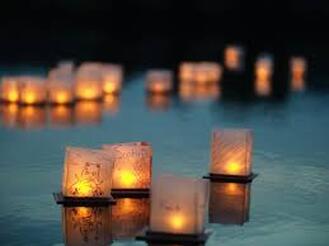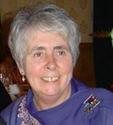
What will life be like after corona? Some are eager to get back to normality, some are anxious as things begin to change and others hope that life will change for the better. Recently Pope Francis encouraged us with a verse from the Aeneid, "What comes to my mind is a verse from the Aeneid in the midst of defeat: the counsel is not to give up, but save yourself for better times, for in those times remembering what has happened will help us. Take care of yourselves for a future that will come." The Scottish Government is also concerned for the future of society and has set up a group to consider just that. A spinoff has been several conversations about what we have valued and learned from the experience of this virus.
There’s been a lot to be grateful for – the way in which local charities, places of worship, community groups and even some businesses immediately came together to meet the needs of the locality and work to ensure no-one in need or in crisis was overlooked. Some charities quickly changed their focus to respond to different and relevant needs. It showed how speedily groups can mobilise and contribute to the well-being of their community. There was a sense of neighbourliness around, described by someone as a well-spring of kindness – places of worship continued with food banks or provided meals for the homeless and those in need, neighbours checked out on one another and strangers greeted one another in passing.
The virus turned the accepted pyramidical structure of society on its head. The important people in society were not those thought to be at the top – the politicians or experts who of course had their own difficulties in making decisions about legislating for the wellbeing of society but we all became aware of how much we depended on those like nurses and care workers, bus drivers, shopkeepers, delivery workers, garbage workers and the many others who are responsible for the safe and smooth running of society. Without them the infrastructure crumbles.
Many of us – at least those of us that are the elders in the community – learned to keep in touch through Zoom and Skype. Computers were shown to be essential for education and communication. But it also showed up the need for good internet connection, access to computers as well as education on how to use them. Would it be possible to make sure every family has a computer? Some local authorities and organisations had very useful information on websites and even e-mailed updates every week, sometimes through local community councils. But what’s the point of that if the most vulnerable cannot access it?
What else could do with changing? One thing is support for the Third Sector. We’ve seen how much British society depends on charities and voluntary organisations, yet they’re always vulnerable and in fear of being closed down through lack of funding. The Third Sector needs more assurance than annual funding and, though it needs to be accountable, should not be burdened by excessive paperwork. Nor should funding be focussed on new projects while denying core funding that is needed to carry out the projects.
Equal pay is another issues crying out for change. Women are still not paid the same as men even while doing the same job in many industries, those working in the care sector should be paid well and appropriately. It should not be the case that universal credit is more than a person can earn. What’s the point of working when this is the case? Should a universal basic income not be considered? This would also help those suffering from food and fuel poverty.
Included in our conversations was concern for asylum seekers, their inability to access funds or their inability to work and contribute to society. There was a desire for some kind of civic assembly that would be a platform for civic involvement. This would give everyone, including people of faith, an opportunity to speak out and get involved. For some this would seem to have nothing to do with faith but it has everything to do with faith and religion. All religions uphold justice and the dignity of all people. They all believe in community and the interrelatedness of all people. They have a care for creation, a vision of equality and service, a recognition of the weaknesses of human nature that focusses on greed and power, a vision that gives support and help in counteracting this. There will be many people of faith who see their faith as a private concern but we all share a common future and to be involved in society is to take seriously our duty of civic engagement. It is to work together for the common good.
As Jonathan Sacks has said
“(Society) is where we set aside all considerations of wealth and power and value people for what they are and what they give. It is where Jew and Christian, Muslim and Hindu, Buddhist and Sikh, can come together, bound by their commonalities, enlarged by their differences. It is where we join in civil conversations about the kind of society we wish to create for the sake of our grandchildren not yet born. It is where we share an overarching identity, a first language of citizenship, despite our different second languages of ethnicity or faith. It is where strangers can become friends. It is not a vehicle of salvation, but it is the most effective form yet devised for respectful coexistence. Society is the home we build together when we bring our several gifts to the common good.” (Jonathan Sacks, The Home we Build Together P.240)



 RSS Feed
RSS Feed
